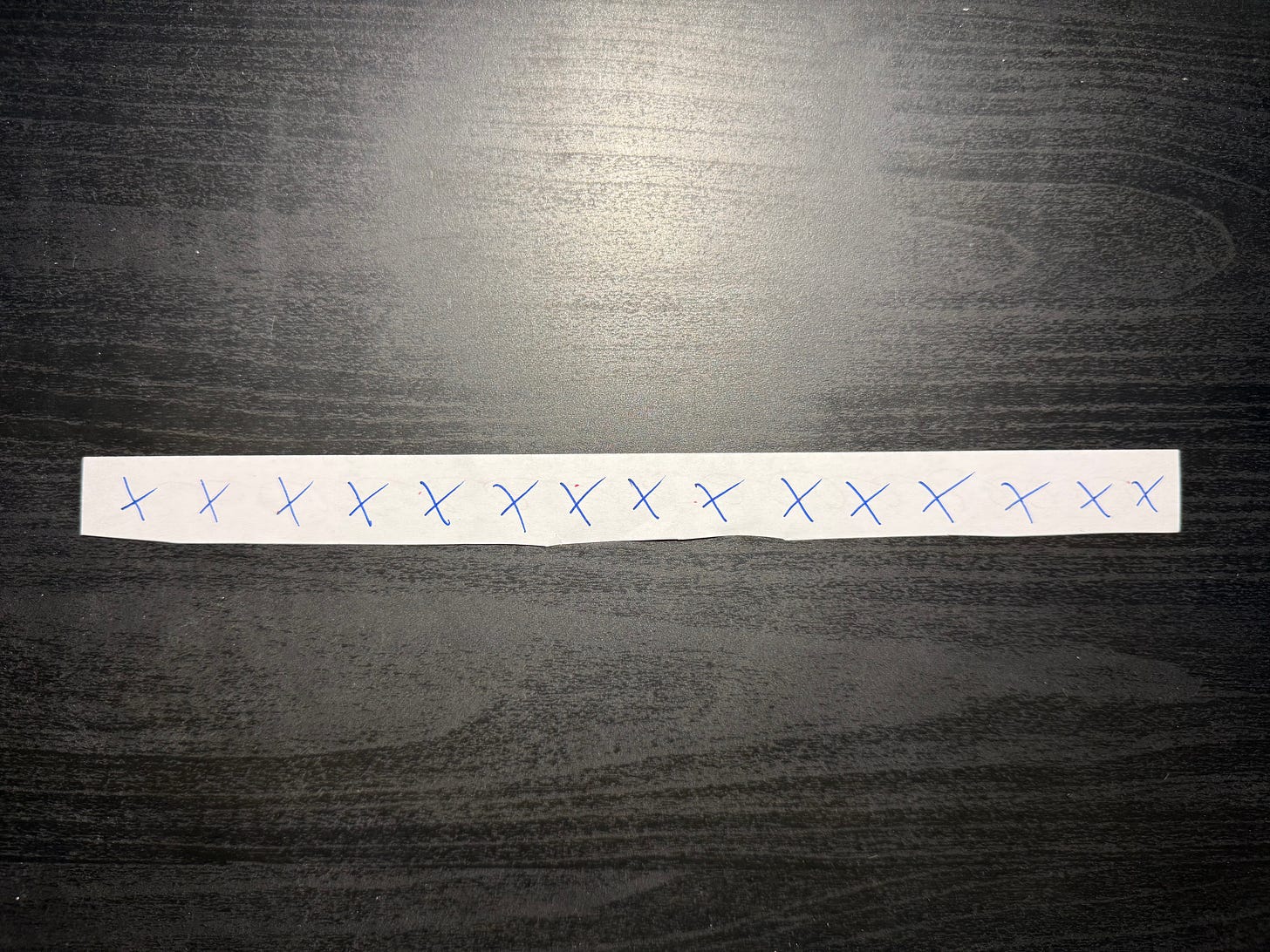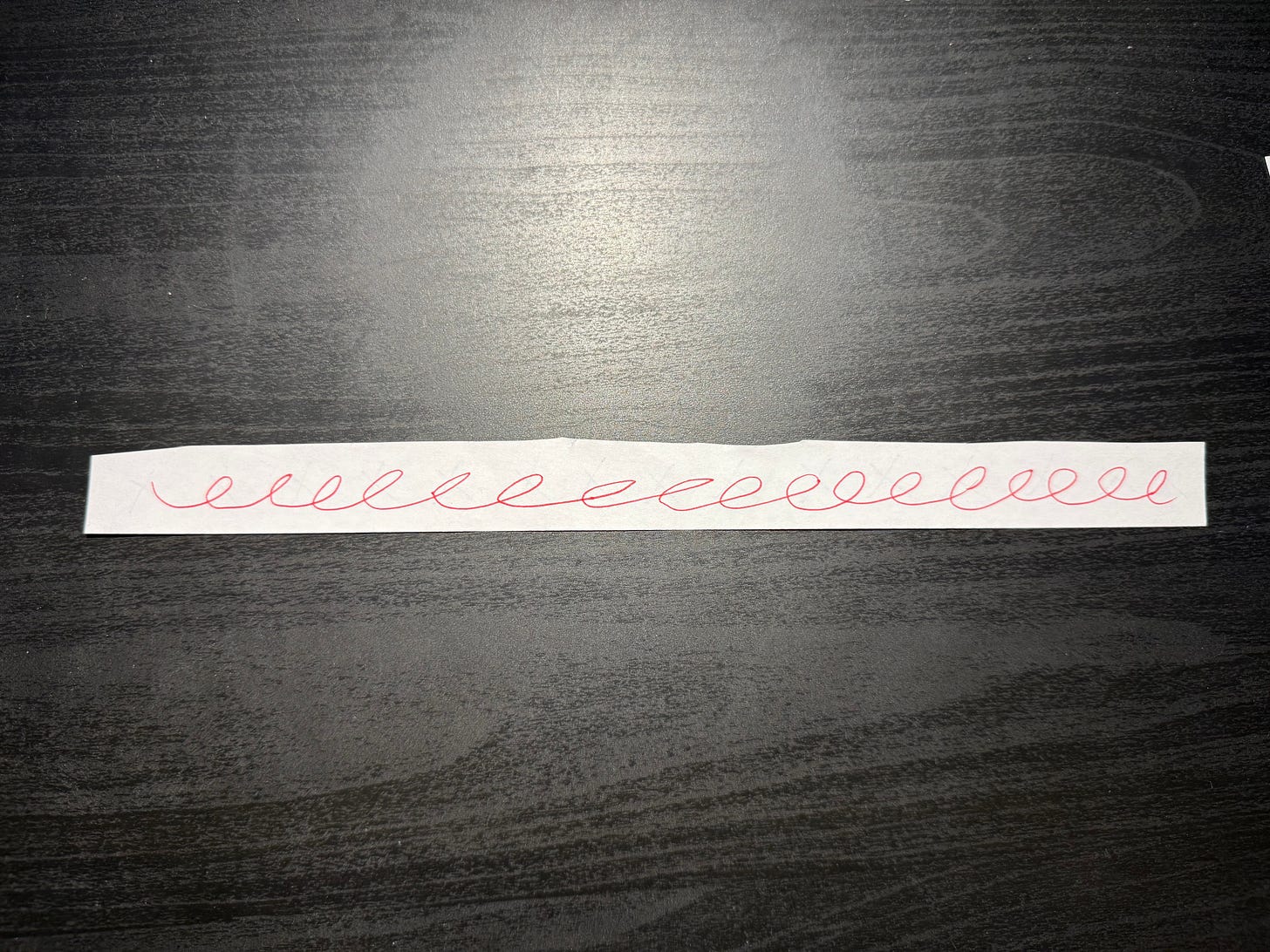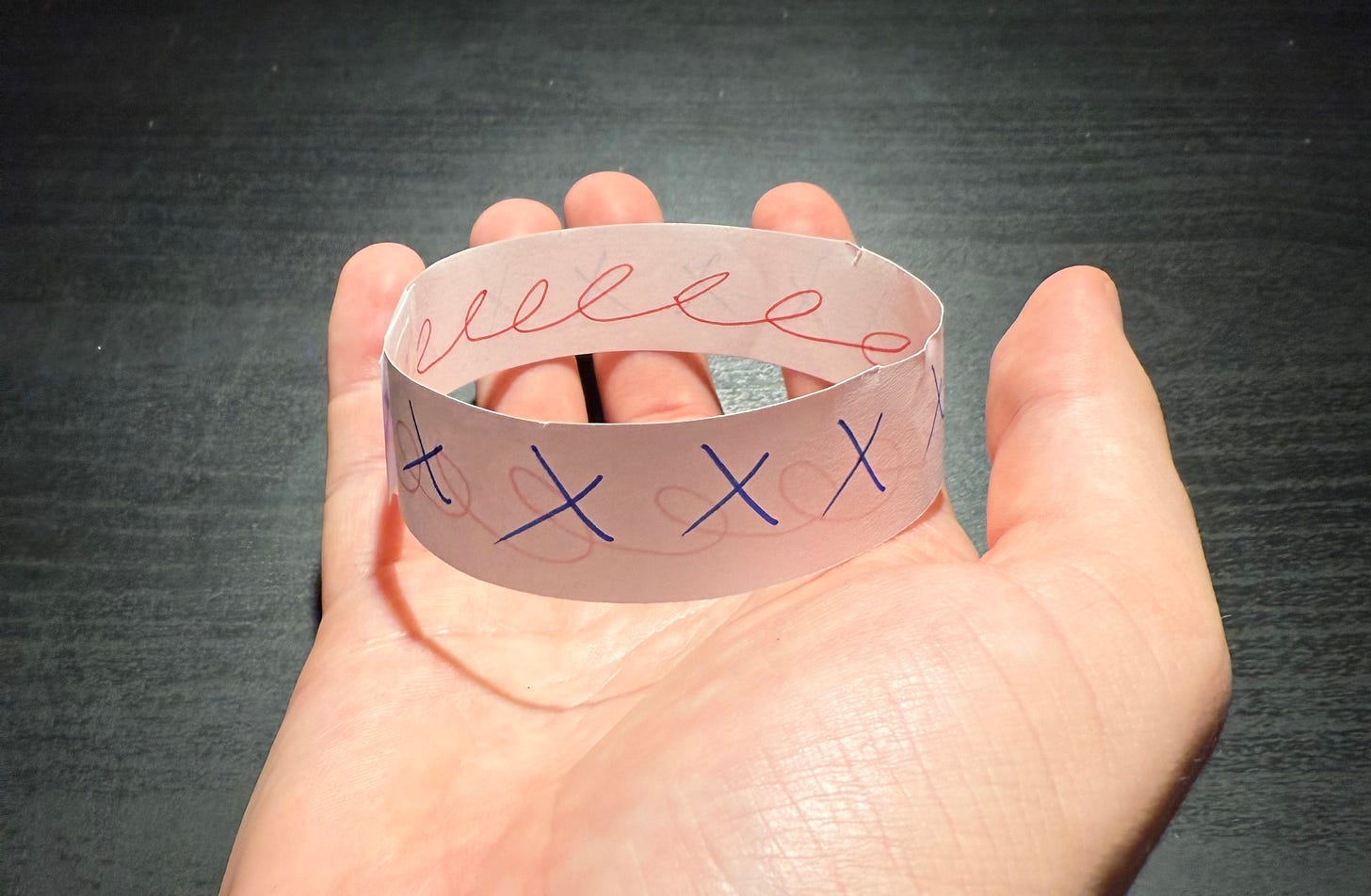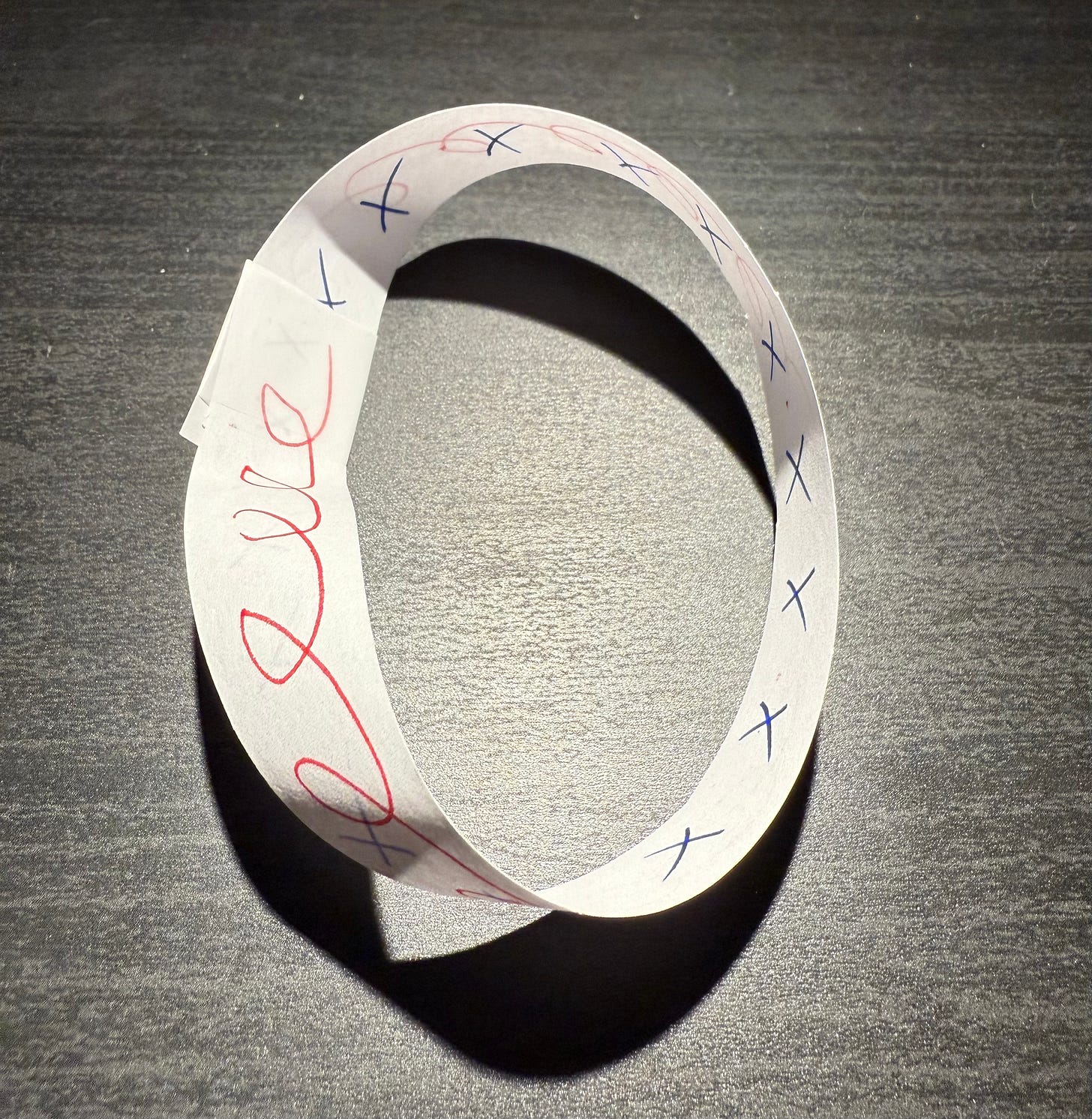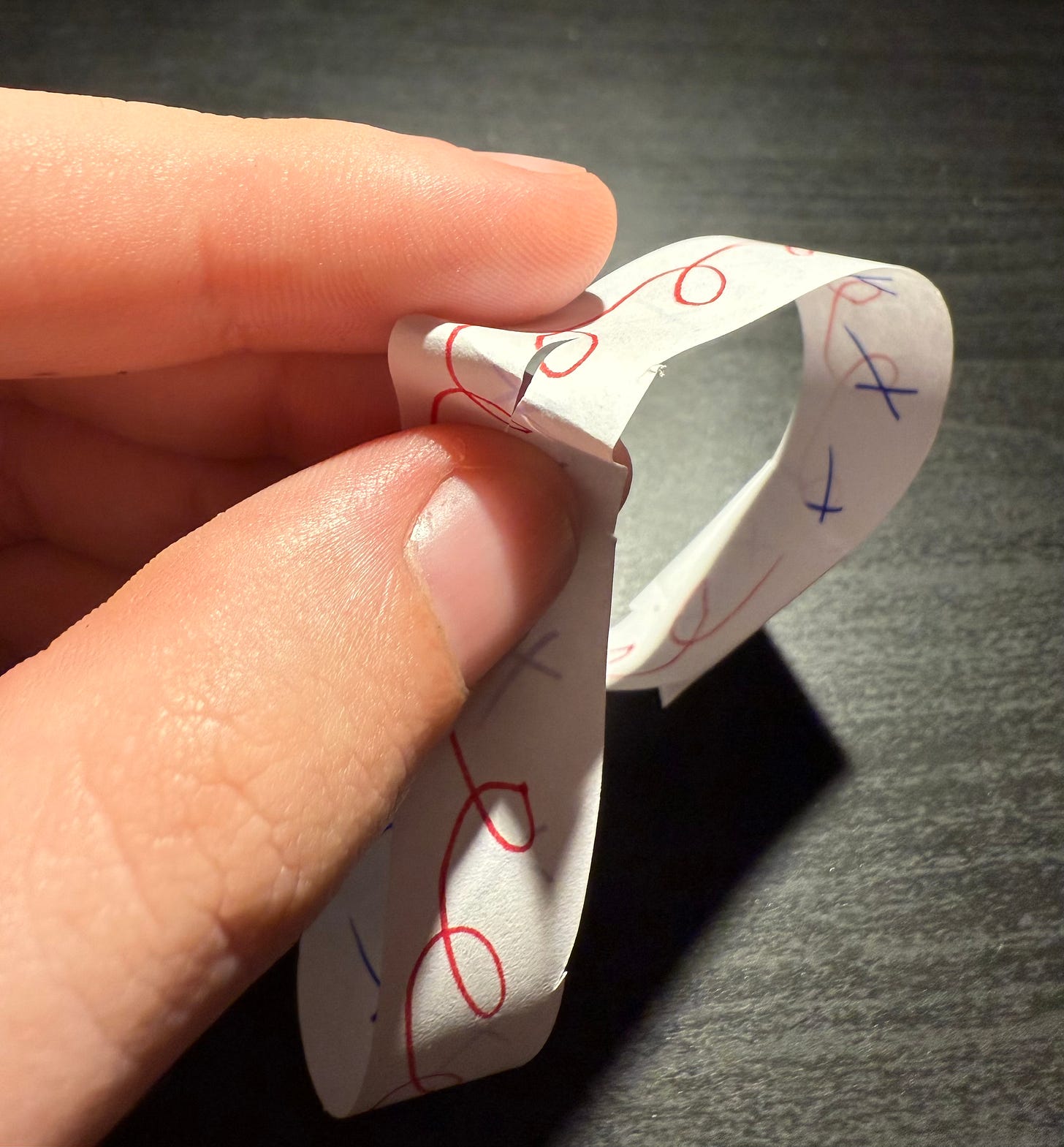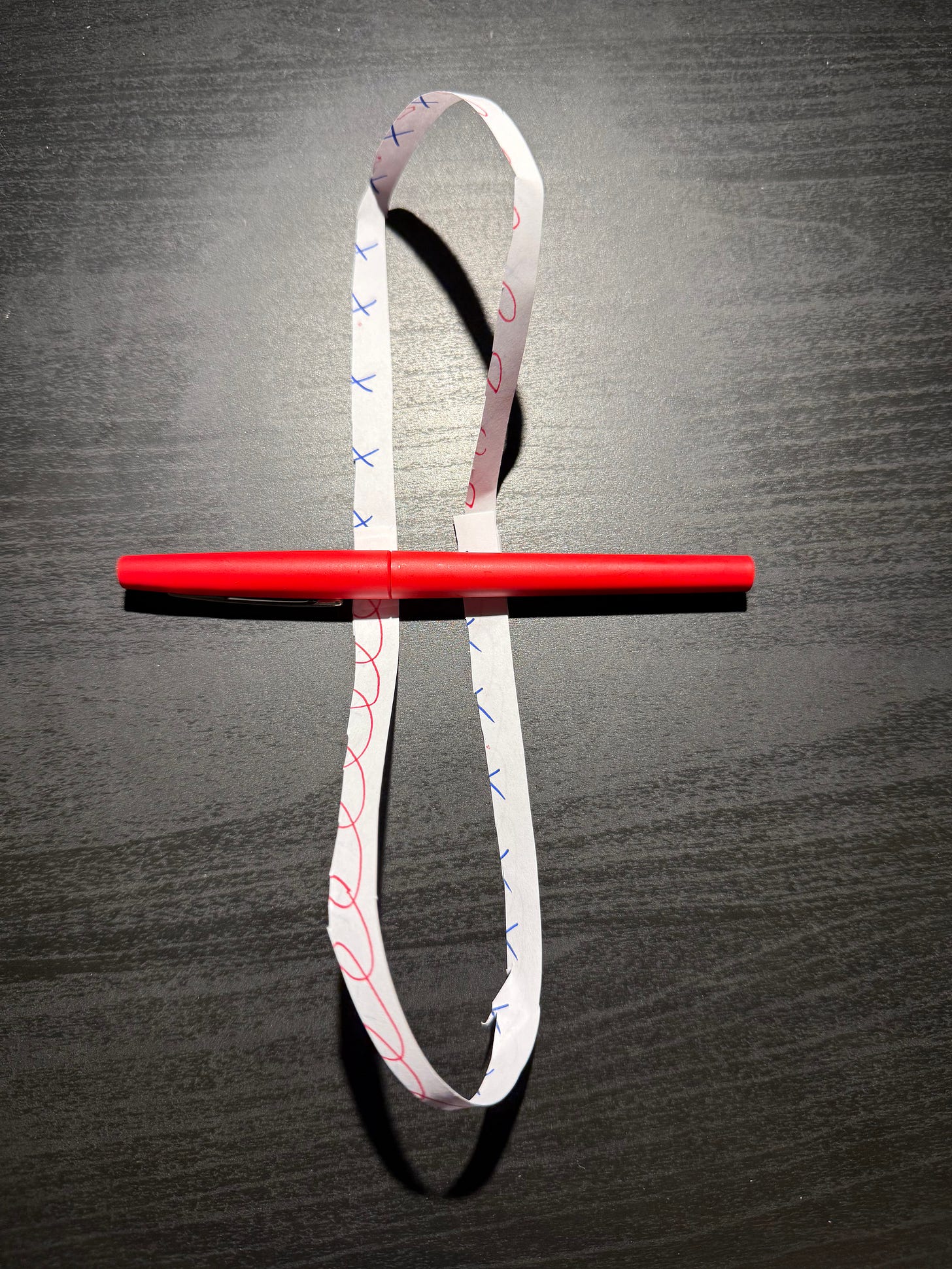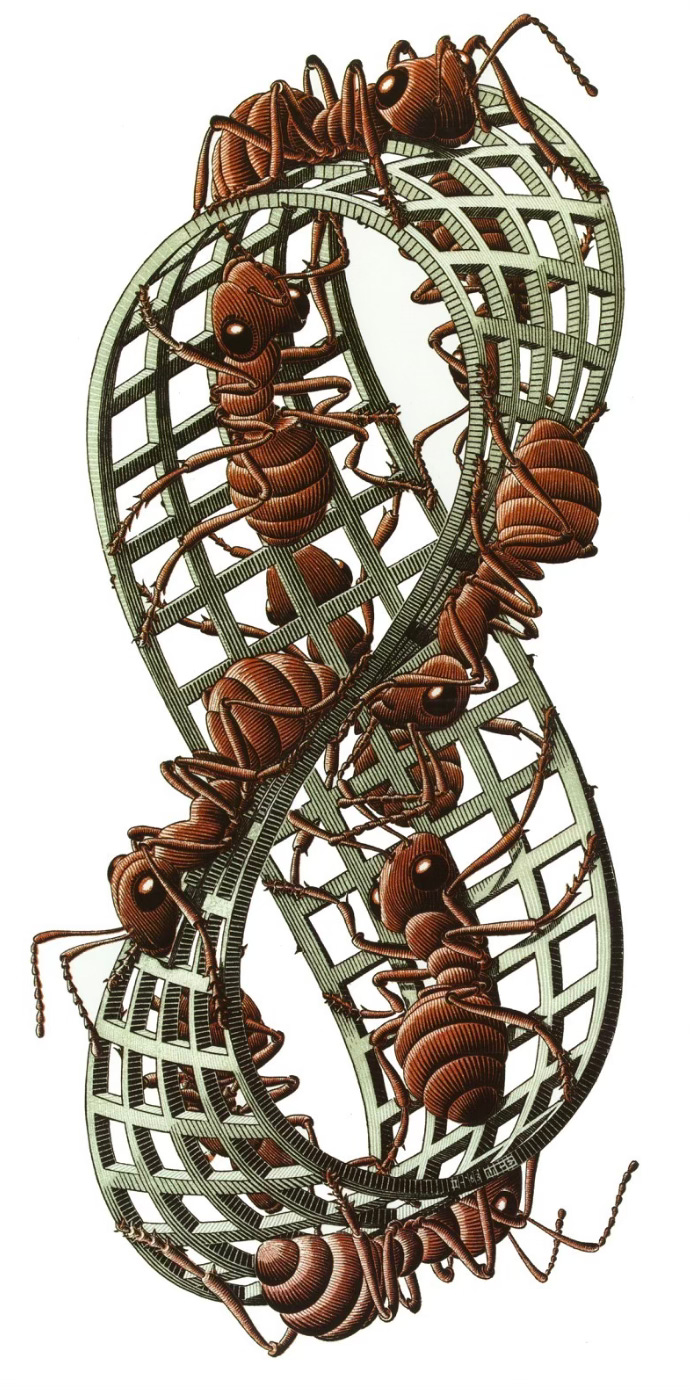I'm experimenting with shorter-form articles to vary my writing practice. This is the first entry in that experiment.
This may be a surprise to many, but even we math nerds get bored sometimes. I know! Hard to believe. When we get bored, we default to our usual tools: pen and paper. In this mini-series I want to share some fascinating objects that math nerds past and present discovered. Many of them you could re-discover at home, while bored, with minimal supplies and background.1 (I highly encourage following along with the "steps" at home if possible; learning math through tactile experience is valuable.)
Most pieces of paper have two sides.2 Indeed, most objects that we interact with in everyday life have at least two sides, right? We can see this with an ordinary strip of paper:
On one side I have the red swirls, on the other, blue Xs. And if I tape the ends together, that's still true—the inside has the blue Xs, the outside has the red swirls:
The way you might “formalize” what it means for an object to have two sides is to imagine an ant walking on the surface. If you pick two points, and the ant can walk from one to the other without crossing an “edge”, then those two points are on the same side. If the ant cannot walk from one to the other without crossing an edge, they are on different sides.3
Everything seems easy and intuitive so far, right? On the cylinder, the ant can’t go from the red swirls to the purple Xs, and vice versa.
Let's do something a bit strange. Now I'm going to take the strip, and before taping the ends together, I'm going to give it a half-twist. Then I get this:
What you quickly notice is that this is an object which has only one side. If you imagine placing the ant on it, it can start on red swirls and walk to purple Xs. It’s called the Möbius strip,4 and is the easiest example of an object with only one side.5
One more thing to try. Take your Möbius strip and make a slit in the middle:
Then keep cutting it open along the middle until you almost get back to where you started. I say almost because, before you finish cutting it, I want you to ask yourself: what is going to happen? Will it fall apart? Will there be a single strip?
What you end up getting is:
Careful following of the strip shows that this is now a single (!?) strip of paper which has a full twist (!?) added to it before gluing the ends. We again have two sides (why?) instead of one.
Here’s some questions to consider:
Are there any everyday symbols that display, in some sense, a Möbius strip?
Try playing tic-tac-toe on a Möbius loop. Is there any interesting/different strategy from a normal game of tic-tac-toe? What other games could you try?
If you’re musically inclined, can you write music that can be played while represented on a Möbius loop?
If any of you make your own Möbius loops or find some interesting things relating to those questions, please let me know—I love seeing people discover things. Thanks for reading!
Indeed, this sort of math is called recreational math, and there have been several academic journals devoted to recreational math over the years.
Citation needed. https://xkcd.com/285/
If you’re following along, check and make sure this matches with your intuition for “sides”. Grab a few random objects and see how many sides they have to you, then imagine the ant walking along the surface.
Also common are Möbius band and Möbius loop. All refer to the same object.
The fancy math term for surfaces with one side is non-orientable surface. If you want to learn more about one-sided things, that’s a good search term.


